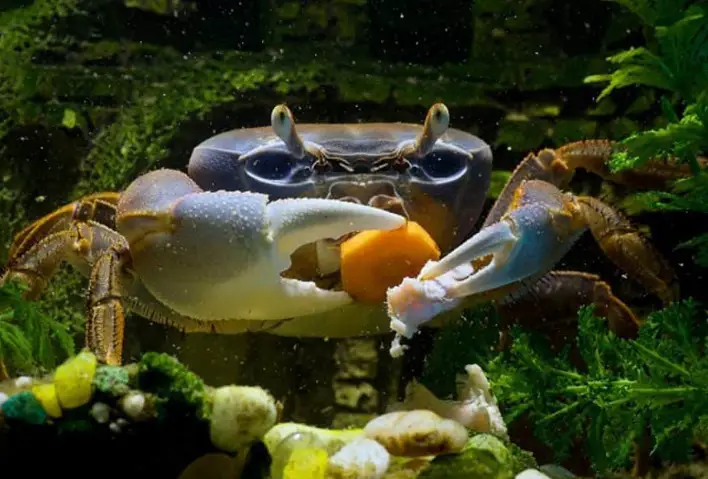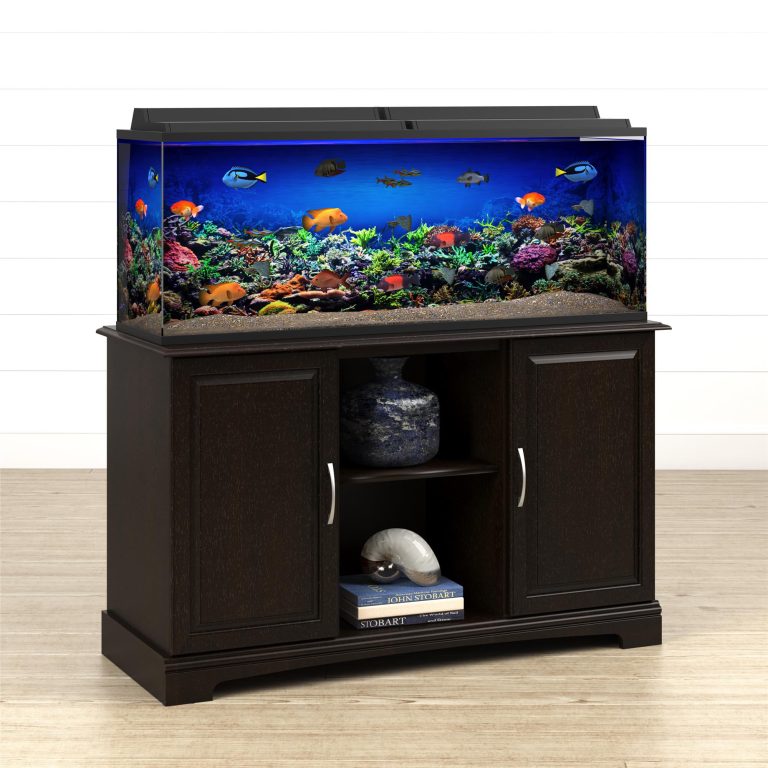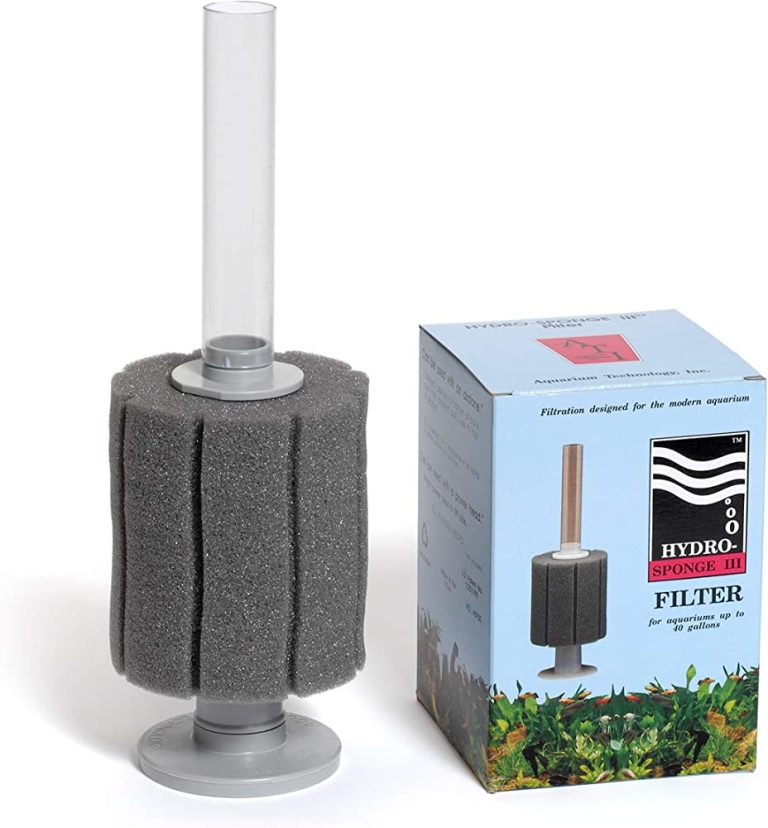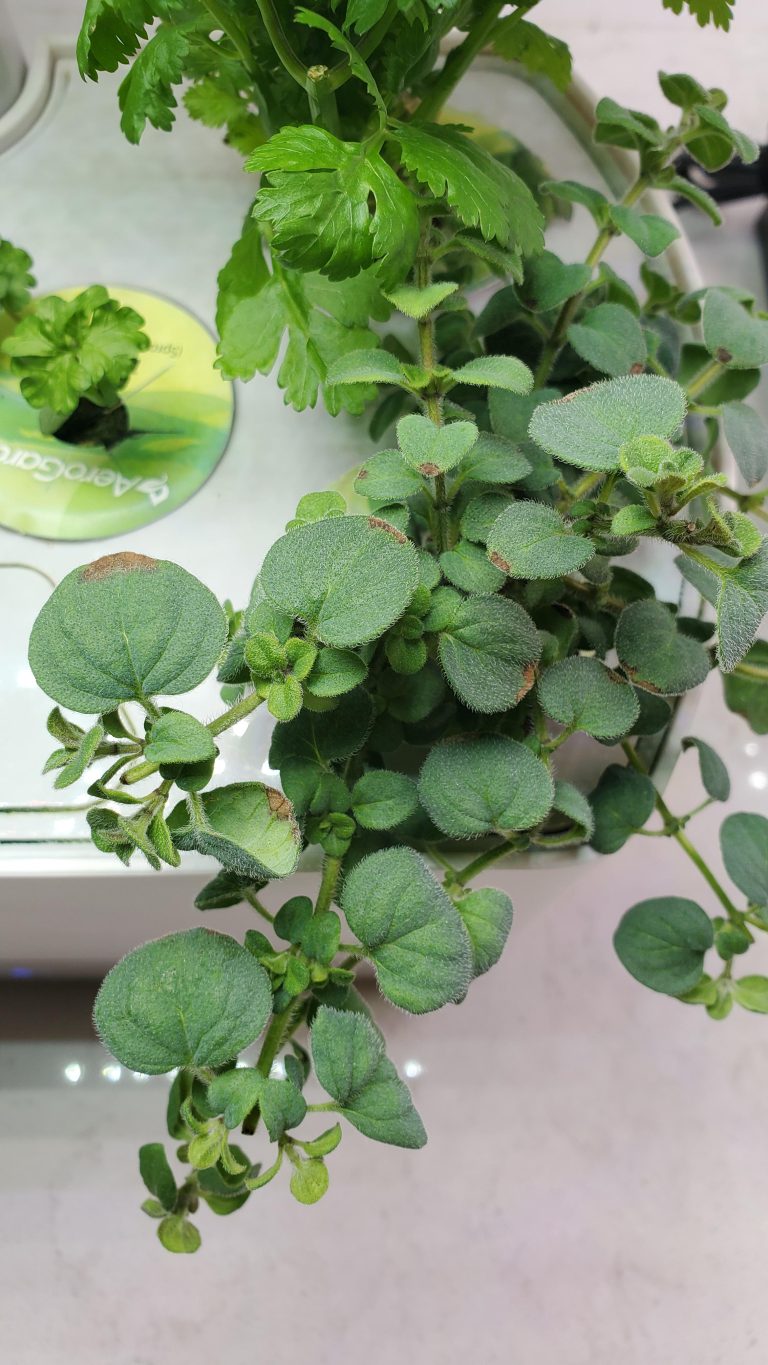Do Crabs Eat Shrimp: Discover Whether Crabs Devour Shrimp In Their Diet
Yes, crabs do eat shrimp. Crabs are known to be omnivores, meaning they consume both plants and animals.
Shrimps are one of the many small marine creatures that crabs enjoy eating. As a primary predator in their ecosystem, crabs play an essential role in maintaining the balance of the food chain. Crabs are found in almost all oceans or seas worldwide, and they are known for their hard exoskeleton that protects them.
They are also an important part of the seafood industry and are consumed by many people worldwide. Shrimp, on the other hand, are tiny, delicate crustaceans that are a popular seafood choice and are eaten by many marine animals, including crabs. In this article, we will explore in detail the relationship between crabs and shrimp and what their feeding habits mean for both species.

Crabs: A Closer Look
Do Crabs Eat Shrimp
Crabs are fascinating creatures and belong to the arthropod family. They are known for their hard shells, which cover their entire body. But, besides that, there is much more to crabs than meets the eye. Let’s take a closer look at their physical characteristics, different types of crabs found worldwide, and their habitat preferences.
Physical Characteristics
Crabs have a distinct appearance that sets them apart from most creatures. Here are some of the key physical characteristics of crabs:
- A hard, protective shell that covers their entire body
- Two large claws that are used for defense, catching food, and fighting
- Ten legs, with the front pair forming the claws
- Their eyes are on stalks, giving them a 360-degree view of their surroundings
- A wide, flattened body, which allows them to hide under rocks and in crevices
Types Of Crabs Found In Different Parts Of The World
Crabs come in a multitude of shapes and sizes, with different species found in various parts of the world. Here are some examples of the various types of crabs found worldwide:
- Snow crab: Found in the north atlantic and north pacific oceans
- Blue crab: Found in the western atlantic and the gulf of mexico
- King crab: Found in the bering sea
- Spider crab: Found in the pacific and indian oceans
- Coconut crab: Found on islands in the indian ocean and central pacific
Habitat Preferences
Crabs can occupy a variety of habitats, from tropical beaches to deep-sea trenches. Here are some of the different types of habitats where crabs can be found:
- Coastal areas: Sandy beaches, rocky shores, and shallow water
- Estuaries: Where rivers meet the sea
- Coral reefs: Provide an ideal environment for various species of crabs
- Deep-sea: Trenches and hydrothermal vents
Crabs are fascinating creatures that possess unique physical characteristics. Different species of crabs can be found worldwide, with each occupying a specific habitat based on its environment.
Shrimp: A Closer Look
Physical Characteristics
Shrimps are small, crustaceans that belong to the decapoda order. They have an elongated body and an exoskeleton that protects them from predators. The body of a shrimp has several segments, including a head, thorax, and abdomen. Shrimps have two pairs of antennae, with one pair being longer than the other.
They also have two pairs of legs that they use for movement.
Types Of Shrimp Found In Different Parts Of The World
There are various types of shrimp found in different parts of the world. Some of the most common types of shrimp include:
- Whiteleg shrimp: This type of shrimp is found in the pacific and indian oceans. It is known for its sweet, delicate flavor and is an essential part of many asian cuisines.
- Tiger shrimp: Tiger shrimp are known for their distinctive striped pattern and are found in the atlantic, pacific, and indian oceans. They are larger in size than many other types of shrimp.
- Pink shrimp: Pink shrimp are the most commonly eaten shrimp in the united states. They are found in the gulf of mexico and the atlantic ocean and are known for their delicate, sweet flavor.
- Brown shrimp: Brown shrimp are found in the gulf of mexico. They have a firmer texture than other types of shrimp and are commonly used for shrimp cocktail.
Habitat Preferences
Shrimps are found in both freshwater and saltwater habitats. They prefer to live in areas with sandy or muddy bottoms where they can burrow and hide from predators. Some species of shrimp prefer to live in warmer waters, while others are found in colder waters.
Some of the factors that influence where shrimp live include:
- Temperature: Shrimp prefer water temperatures between 20°c and 30°c, but some species can tolerate colder or warmer waters.
- Salinity: Some species of shrimp are more tolerant of salinity changes than others. Some species can survive in both freshwater and saltwater habitats.
- Water quality: Shrimps are sensitive to changes in water quality and can be negatively affected by pollution and other environmental factors.
Shrimp are a popular species of seafood around the world, and they are an important part of many cuisines. Shrimps have unique physical characteristics that allow them to survive in different environments. Knowing the different types of shrimp found around the world and their specific habitat preferences will help you understand their behavior and ways in which we can conserve them.
Understanding The Diet Of Crabs
Do Crabs Eat Shrimp
Crabs and shrimps are both decapod creatures belonging to the crustacea subphylum. While they share certain characteristics, it’s essential to understand their feeding habits and dietary preferences. In this blog post, we’ll concentrate on crabs and try to understand their diet.
General Feeding Habits Of Crabs
Crabs are omnivores, meaning they eat both plant and animal material. Some crabs are scavengers, while others are predators. General feeding habits of crabs are:
- Crabs feed on various invertebrates like snails, bivalves, and worms.
- They can also consume small fish and crustaceans like shrimp.
- Some crabs consume algae, detritus, and other plant material.
- Crabs are opportunistic and can eat anything available to them.
Factors Influencing What Crabs Eat
The food choices of crabs depend on several factors like:
- Size: Smaller crabs are generally limited to a narrower food web, while larger crabs can target more massive prey and can eat more species.
- Habitat: The feeding habits of crabs differ based on their habitat, like rocky seashores or muddy habitats.
- Availability: Crabs are opportunistic feeders and consume whatever is widely available to them.
The Role Of Habitat In Crab Dietary Behaviors
Crabs inhabiting the same geographic area can have different feeding habits based on their habitat. For example:
- Mangrove crabs are primarily herbivorous and feed on leaf litter and wood.
- Shore crabs feed on algae found in rocky seashores.
- Mud crabs feed on worms, small fish, and crustaceans that live in the mud.
The habitat of crabs is essential to their survival and influences their dietary behaviors.
Crabs are opportunistic feeders and will consume anything available to them. The food choices of crabs depend on several factors like size, habitat, and availability. Understanding the dietary preferences of crabs can help researchers study their abundance and distribution. Hence, it’s crucial to understand the crabs’ feeding habits and their role in the ecosystem.
The Evidence
Do Crabs Eat Shrimp: The Evidence
Crab species are known to be omnivorous, which means they eat both plants and animals. Researchers have been investigating whether or not crabs eat shrimp, and evidence has been found via studies, observations by marine experts, and anecdotal evidence.
Studies On The Feeding Habits Of Crabs
Researchers have conducted studies to determine the feeding habits of crabs, providing evidence that crabs do eat shrimp under certain conditions. Studies conducted in laboratory settings showed that crabs would readily eat shrimp when they were scarce of food. In contrast, the crabs were less likely to eat shrimp when plentiful food options, such as algae, were available.
Observations From Marine Experts
Marine experts have observed the feeding habits of crabs in their natural habitats. They reported that some crabs eat shrimp but not all species eat shrimp. Some species of crabs are known to prefer small fish and other crustaceans over shrimp.
The experts also noted that crabs tend to consume shrimp at lower levels than other organisms in the food chain.
Anecdotal Evidence
There have been many anecdotal reports of crabs eating shrimp. Commercial crabbers and recreational fishermen often find partially eaten or undigested pieces of shrimp in the stomachs of crabs they’ve caught. While anecdotal evidence isn’t as reliable as scientific studies, it offers insight into the feeding habits of crabs in the wild.
Crabs do eat shrimp, as proven by studies, observations from marine experts, and anecdotal evidence. While not all crab species eat shrimp, it is clear that the feeding habits of crabs are complex and dependent on many factors, such as the availability of food and the type of habitat.
Future research is needed to determine how crabs’ consumption of shrimp impacts their ecosystems and how such information can be used to manage crab populations sustainably.
Factors That Influence Crab Feeding Behavior
Do crabs eat shrimp? It’s a common question that many people may have when observing marine animals. The answer is not a simple yes or no. There are many factors that influence crab feeding behavior when it comes to shrimp.
Let’s dive deeper into the factors that affect whether crabs eat shrimp or not.
Geographical Location
The geographic location is one of the primary factors that determine whether crabs eat shrimp or not. For example, species of hermit crabs, which are common in the eastern pacific ocean, have been observed eating and competing for shrimp. However, in the caribbean, where another type of crab is prevalent, shrimp may be a more minor part of their diet.
Here are some key points to consider:
- Geographically located species of hermit crabs commonly eat shrimp.
- The species of crabs found in the caribbean may have a lesser shrimp diet.
Water Temperature
Water temperature is another critical factor affecting crab feeding behavior when it comes to shrimp. Crabs’ metabolic rate increases in warmer waters, leading to a higher demand for food. When the warm water is rich in shrimp, crabs tend to eat more of it.
Here are some key points to consider:
- Crabs’ metabolic rate increases with higher water temperature.
- In warmer water, crabs eat more shrimp to satisfy their increased demand for food.
The Availability Of Prey
The availability of prey is the final significant factor affecting crab feeding behavior when it comes to shrimp. When there is a surplus of shrimp in the environment, crabs will be more likely to eat them. Conversely, when there is a lack of shrimp, crabs may resort to eating other food sources.
Here are some key points to consider:
- The availability of shrimp in the environment affects the crabs’ diet.
- When there is a surplus of shrimp, crabs are more likely to eat them.
While the question, “do crabs eat shrimp? ” May seem simple, the answer is more complex than that. Geographical location, water temperature, and the availability of prey are the three significant factors that influence crab feeding behavior when it comes to shrimp.
By understanding these factors, we can understand better under what circumstances crabs are more likely to eat shrimp.
Mutualistic Relationship
Do Crabs Eat Shrimp: Mutualistic Relationship
Crabs and shrimp are both crustaceans that can be found in different aquatic environments. At first glance, you may think that crabs will prey on shrimp because they are smaller in size. However, the truth is, these creatures form a mutualistic relationship which benefits both parties involved.
Explanation Of The Benefits Of This Relationship
The mutualistic relationship between crabs and shrimp involves the shrimp living in the burrows created by crabs. This type of association allows both organisms to gain benefits from each other. Here are some of the benefits:
- Protection: Shrimp gain protection from predators because they are living in the burrows created by crabs. The burrows act as a safe haven for shrimp, protecting them from larger predatory fish that could otherwise harm or eat them.
- Access to food: Crabs are omnivores, meaning that they consume both plant and animal matter. The scraps left after crabs feed on food provide a constant supply of nutrients for the shrimp. The shrimp, in turn, clean up the burrow, removing any leftover food particles before they can rot. This keeps the burrow clean and healthy for both species.
- Navigation: As shrimp can see better than crabs, they help crabs avoid predators and navigate the surroundings. This is because shrimp have better eyesight to detect predators and potential food sources. The shrimp will alert the crab when there is danger, causing the crab to retreat into its burrow for safety.
The Role Of Each Creature In This Relationship
In this mutualistic relationship, each creature plays a crucial role. The crab creates and maintains the burrow, providing shelter for the shrimp. Here’s how each creature contributes to this association:
- Crabs: Crabs are the ones that make the burrow where the shrimp can live. The burrow provides a safe place for the shrimp to live.
- Shrimp: Shrimp maintain the burrow by cleaning up all the food scraps that would otherwise rot inside the burrow. They also act as the eyes of the crab, warning them in case of any impending danger.
The relationship between crabs and shrimp is an excellent example of how two entirely different creatures can come together and benefit from each other. Crabs gain access to cleaning services, while shrimp obtain a safe place to live. This mutually beneficial arrangement in nature is an excellent reminder of how different organisms can come together and support each other.
Predatory Relationship
There is no denying that the ocean is a vast and complex ecosystem, teeming with diverse marine life. Within this ecosystem, predator-prey relationships are common, and crabs and shrimp are no exception. As marine animals, both crustaceans occupy a similar ecological niche, and as such, they may hunt each other.
In this section, we’ll explore the predatory relationship between crabs and shrimp and instances where this may occur.
Explanation Of How Crabs And Shrimp May Be Predatory Towards Each Other:
- Both crabs and shrimp are carnivorous and play the roles of predators and prey in the food chain.
- The larger-sized crabs often see smaller-sized shrimp as a tasty meal, while the smaller-sized crabs fall prey to larger-sized shrimp.
- Some species of crabs, such as blue crabs, are known to be opportunistic feeders and may eat shrimp if available. Additionally, some species of shrimp, such as mantis shrimps, are notorious for preying on small crabs.
Instances In Which This Relationship May Occur:
- Crabs and shrimp may come into contact with each other while hunting for food in shallow waters.
- During the mating season, male crabs may hunt for female shrimp as a way to attract a mate.
- Predator-prey relationships may also occur when crabs or shrimp are competing for resources such as food and shelter.
Crabs and shrimp are both vital players in the delicate marine ecosystem, but they may also be predators and prey. The predatory relationship between these two crustaceans is a fascinating aspect of their lives, highlighting the complexity of the ocean and the creatures that inhabit it.
What’S The Verdict?
Do crabs eat shrimp? It’s a frequently asked question among marine enthusiasts. While crabs are known to be voracious predators, it’s natural to wonder if they prey on shrimp. In this blog post, we explore the evidence, answer this question, and provide insights into how these creatures interact in their habitats.
A Summary Of The Evidence Explored
- Do crabs eat shrimp? Yes, they do. Crabs are known to prey on a variety of marine creatures, including shrimp.
- However, not all crabs eat shrimp. The larger species of crabs, such as dungeness crabs, are known to prey on shrimp, while smaller species tend to feed on algae and small invertebrates.
- The diet of crabs varies depending on their species, availability of food, and habitat. Some species of crabs are omnivores and can feed on both plants and animals, while others are strictly carnivorous.
- The relationship between shrimp and crabs is complex, and they interact in various ways in different habitats. In some cases, shrimp and crabs compete for resources, while in others, they coexist harmoniously without interfering with each other’s food sources.
Insights Into How Crabs And Shrimp Interact In Various Habitats
In different marine habitats, crabs and shrimp interact with each other in unique ways.
- In coral reefs, mantis shrimp and pistol shrimp live alongside each other without any apparent conflict. While mantis shrimp are predators, they feed on other animals like crustaceans and fish, while pistol shrimp feed on small invertebrates.
- In seagrass beds, peppermint shrimp are known to clean and groom sea turtles, while crabs feed on algae.
- In estuaries, fiddler crabs are known to compete for food with mud shrimp, as they have similar diets.
- In rocky intertidal zones, shore crabs are known to prey on porcelain crabs.
While crabs do eat shrimp, not all species of crabs prey on them, and the relationship between these creatures is complex. The predator-prey relationship between crabs and shrimp is just one element of the complex web of interactions that occur between creatures in marine habitats.
Understanding how these creatures interact is essential to maintain the ecological balance in the oceans.
Frequently Asked Questions For Do Crabs Eat Shrimp
Do Crabs Eat Shrimp As Part Of Their Diet?
Yes, crabs eat shrimp as part of their diet, especially smaller species.
How Do Crabs Catch And Eat Shrimp?
Crabs use their powerful claws to catch shrimp and then tear them apart to consume.
Are There Certain Types Of Shrimp Crabs Prefer?
Crabs generally feed on any available shrimp, but they tend to prefer smaller ones.
Are There Any Species Of Shrimp Crabs Avoid?
Certain types of toxic or venomous shrimp, such as mantis shrimp, are avoided by crabs.
Conclusion
As we come to the end of this article, we can conclude that crabs do indeed eat shrimp. However, it is important to keep in mind that this is not the only food source for crabs and they have a diverse diet that includes other crustaceans, mollusks, and even fish.
It is interesting to note that despite being carnivorous, certain species of crabs have also been known to eat algae and seagrass. In the oceanic food web, crabs and shrimp play crucial roles in maintaining balance and diversity. As both species are also a delicacy for humans, it is important to be mindful of sustainable fishing practices to ensure their populations remain healthy.
Understanding the dietary habits of these creatures can help us appreciate the intricate dynamics of the ocean and the importance of preserving it for future generations.






